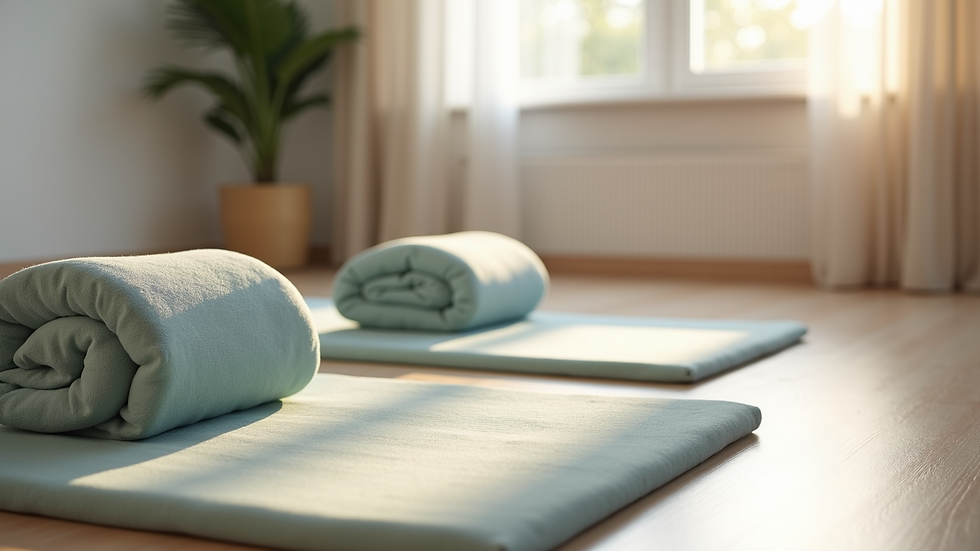Incontinence affects millions of people globally, yet it remains a subject of embarrassment and confusion. Many individuals struggle with this condition, impacting their daily activities and emotional well-being. Understanding the causes, types, and symptoms of incontinence is vital for seeking effective help. Fortunately, holistic therapies from certified experts like Jane Franczak at SerendipPT can offer innovative solutions to enhance quality of life and restore personal balance.
What is Incontinence?
Incontinence is the unintentional loss of urine or feces, creating social and emotional challenges for those affected. It is important to note that incontinence is a symptom of an underlying issue rather than a standalone disease. The experience of incontinence varies significantly among individuals, and numerous factors can contribute to its onset.
Types of Incontinence
Incontinence is classified into several distinct types, each with its characteristics:
1. Stress Incontinence
Stress incontinence is marked by leakage during physical activities such as laughing, sneezing, or exercising. Research shows that up to 35% of women experience this type, especially after childbirth or during menopause. For example, a woman post-childbirth may find that jumping causes accidental leakage.
2. Urge Incontinence
Also known as overactive bladder, urge incontinence stems from a sudden, intense urge to urinate. Studies indicate that 18% of adults experience this condition, leading to involuntary leaks before reaching the restroom. An individual may often feel the need to "go" urgently, particularly after drinking.
3. Overflow Incontinence
Characterized by a constant dribbling of urine, overflow incontinence occurs when the bladder does not empty fully. Conditions such as urinary tract infections (UTIs) or prostate problems can contribute to this type. It can affect up to 25% of men, and signs may include frequent bathroom visits with minimal relief.
4. Functional Incontinence
This type arises from physical or mental limitations preventing timely bathroom access. For example, a person with arthritis might struggle to remove clothing quickly, leading to accidents. It can affect individuals with mobility challenges or memory issues, making it crucial to have support systems in place.
5. Mixed Incontinence
Mixed incontinence involves symptoms from both stress and urge incontinence, complicating diagnosis and treatment. It requires tailored strategies for effective management, as it combines the challenges of multiple types.
Common Causes of Incontinence
Identifying the root causes of incontinence paves the way for appropriate treatment. Here are some common causes:
1. Pregnancy and Childbirth
Women often experience stress incontinence post-pregnancy due to physical changes. Studies indicate that approximately 50% of women may face bladder issues after childbirth, primarily due to weakened pelvic floor muscles.
2. Aging
As individuals grow older, the body’s muscle tone and tissue elasticity decline—key factors influencing bladder control. In fact, nearly 30% of older adults experience various forms of incontinence.
3. Menopause
During menopause, decreased estrogen levels can weaken pelvic muscles, resulting in incontinence. Statistics reveal that 48% of women report bladder issues during and after this stage.
4. Prostate Issues
Men may experience urinary incontinence due to an enlarged prostate or surgery complications. Estimates show that 25% of men face incontinence after prostate surgery, highlighting the need for targeted treatment approaches.
5. Neurological Conditions
Neurological disorders like multiple sclerosis or Parkinson's disease disrupt brain-bladder communication, leading to incontinence. Approximately 15% of individuals with such conditions report bladder control issues.
6. Infections
Urinary tract infections can trigger sudden incontinence marked by an urgent need to urinate. Nearly 8 million doctor visits in the U.S. each year result from UTIs, which often lead to acute incontinence.
Recognizing Symptoms of Incontinence
Timely recognition of incontinence symptoms is essential for effective intervention. Look for:
Unintentional loss of urine or feces
Frequent urges to urinate
Leakage during exercise or physical activities
Inability to schedule bathroom visits
Sudden urges resulting in accidents
If you notice these symptoms yourself or in someone you care for, consult a healthcare provider promptly for diagnosis and treatment options.
A Holistic Approach to Managing Incontinence
While incontinence may feel overwhelming, holistic therapies can offer effective symptom management. Consulting a specialized Pelvic Floor Physical Therapist like Jane Franzcak at SerendipPT provides individuals with actionable support.
1. Pelvic Floor Rehabilitation
Pelvic floor therapy focuses on assessing the pelvic muscles to understand how to effectively approach restoring balance and function. In some cases, the pelvic floor may be weakened, in other cases, the pelvic floor could be tense. By learning more about the body and making an assessment, a plan for treatment can be made, including specific techniques tailored to their unique needs, improving their quality of life.
2. Education and Awareness
Understanding bladder functions empowers individuals to manage their conditions better. A therapist can provide valuable insights into dietary factors, hydration, and daily routines that impact bladder health.
3. Breath and Relaxation Techniques
Stress often worsens incontinence symptoms. Simple breathing techniques and relaxation practices can alleviate anxiety and enhance pelvic floor function, contributing to more stable bladder control.
4. Lifestyle Modifications
Adopting healthy habits, such as balanced diets and regular exercise, contributes positively to bladder function. A physical therapist can guide you in making effective changes to your lifestyle, reducing incident frequency.

5. Personalized Treatment Plans
Every individual experiences incontinence differently. A certified therapist will assess each case carefully, developing a custom program that addresses the specific causes and symptoms involved.
Moving Forward with Confidence
Incontinence is a nuanced condition that can greatly affect daily life. By understanding its causes, types, and symptoms, individuals can seek appropriate treatment and support. Holistic therapies from trained professionals like Jane Franczak at SerendipPT present effective avenues for managing symptoms and regaining control. If you or a loved one is experiencing incontinence, remember that help is available, and the journey to healthier living begins with taking the first step. Embrace the support and strategies that lead to a brighter, more proactive future.

Comentarios